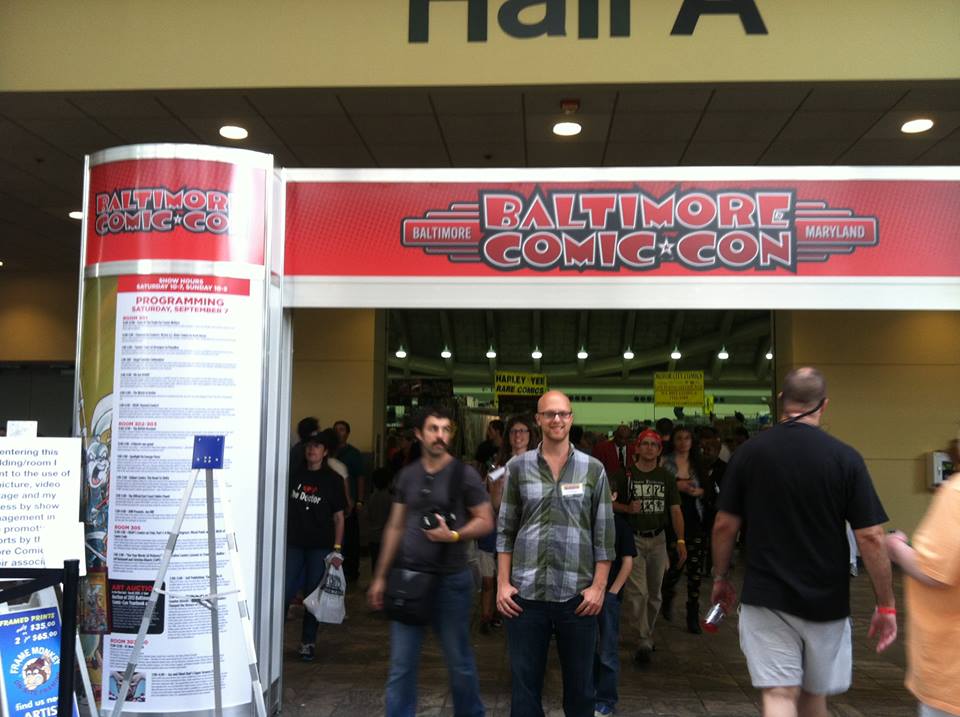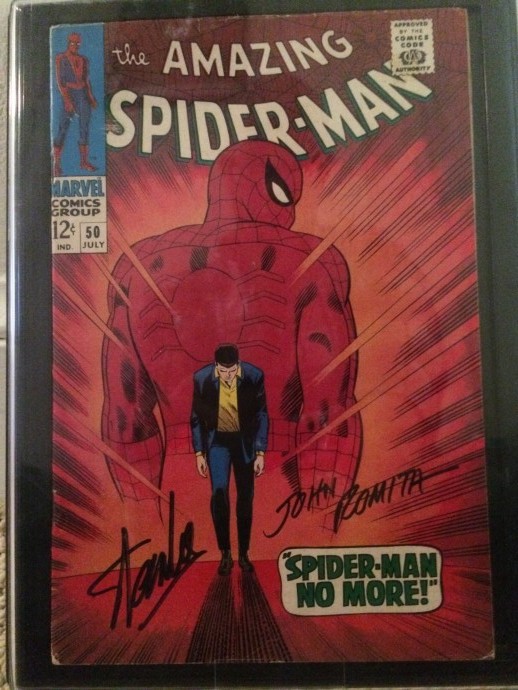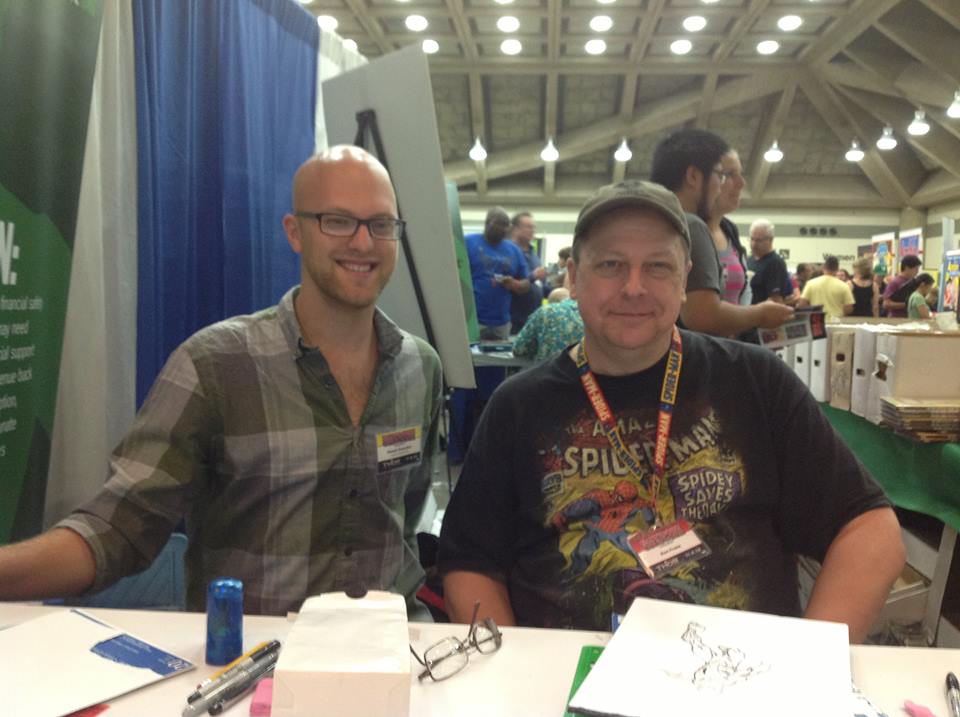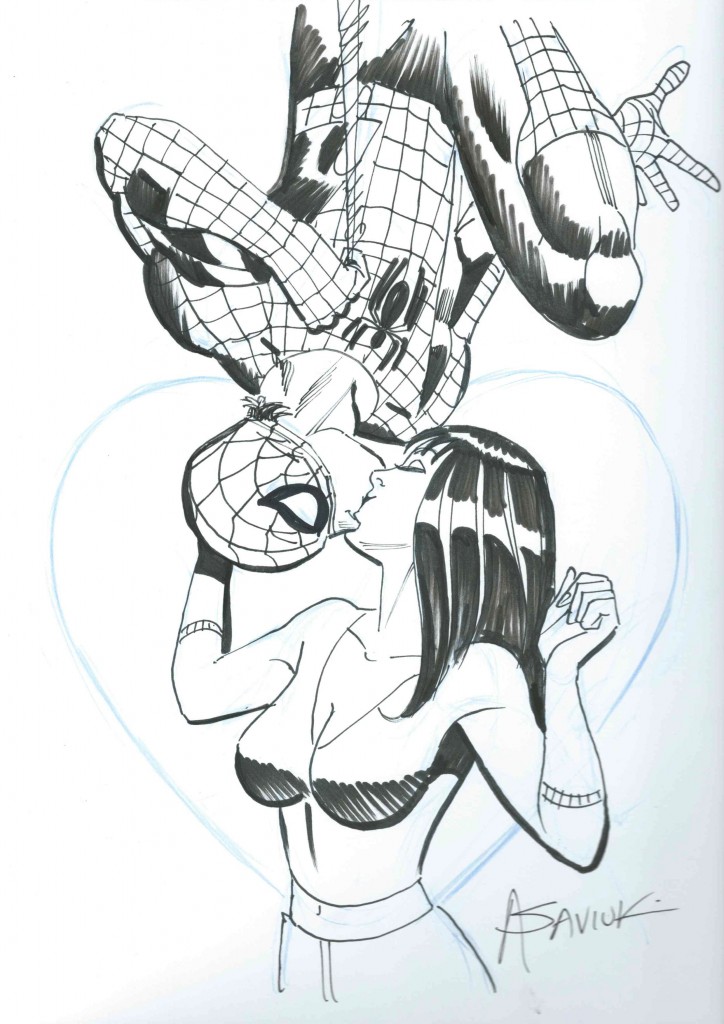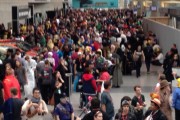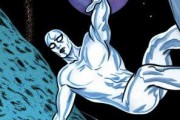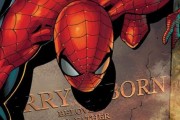Editor’s Note: For the first time in Chasing Amazing history, we have a guest blogger. Dan Gvozden, from (the new) Grind My Reels.com and the co-host (with me) of Superior Spider-Talk was nice enough to share his experiences from Baltimore’s Comic Con earlier this month. Sadly, I couldn’t join him at the con, but Dan had some amazing experiences (and you’ve hopefully already downloaded the Ron Frenz and Paul Jenkins interviews he conducted). Take it away Dan!
There are few pleasures greater than thumbing through a dusty bin in search of a long-forgotten treasure. The thrill of the hunt, the anticipation of the find, the surprise of the acquisition. With a flick of a finger another relic of pop culture past gets lost in the pile as hundreds await my hungry eyes. I’m looking for the man in red, blue, and webs. The figure that was so essential to my childhood and is increasingly a part of my sometimes adult existence.
Yes, I am looking for the one they call Spider-Man and there is no better place to find his long-lost adventures than in the innumerable longboxes that make up the Baltimore Comic Con. So every year, for at least the past 5 years, I trek up to Baltimore for what I consider to be one of the best events for fans of sequential art and fiction.
The name’s Dan Gvozden, some of you might know me from Mark and my podcast, Superior Spider-Talk. Mark has been gracious enough to allow me to tell you a little about myself and the Baltimore Comic Con that I attended on September 7-8 this year.
I’ve lived outside of Baltimore for most of my life and, despite the negative press and realities of the city, I adore the culture of Baltimore. The city has this offbeat sense of style that is almost pre-hipster. The artistic identity of the city seems to be: Well it was here so let’s just put something on top of it. All you need to do to get a good idea of the city is go to Penn Station, the main train station, to see the Beaux Art architectural stylings of the building complete with a gaudy Male/Female statue out front.
Baltimore Comic Con is my favorite of the conventions that I’ve had the fortune to attend, and each year it just gets better. The real draw though is that it seems to be the last of the big conventions that is still wholly focused on comics. There is little to no film presence and its not too big that you can’t check in with your favorite creators. Over the years I’ve had the pleasure to meet and talk with Brian Michael Bendis, John Romita Sr., his son John Romita Jr., Mark Waid, Ron Frenz, Roger Stern, J.M. DeMatteis, Stan Lee (I probably should have started with him), and even Sal Buscema. The list goes on and on.
Like Mark, I am “Chasing Amazing” and my collection is nearly complete. I’m 7 issues away and I use Baltimore Comic Con as one of my hunting grounds. Though, what I fixate on the most at the Con is highly sought-after signatures from some of my favorite people in the industry. My most treasured item comes from a once-in-a-lifetime event at the Baltimore Comic Con.
My favorite issue of Amazing Spider-Man is the classic #50. I knew that Stan Lee would be at the Baltimore Comic Con several years ago and managed to get him to sign it. What I didn’t expect was that last year during the Stan Lee panel that John Romita Sr. would be the special guest. Mark Waid was moderating the panel and towards the end they announced that they would be doing a trivia contest for prizes. The prize would be a poster signed by both Romita and Stan Lee and so I quickly raised my hand and got called on by Waid. “Yes you back there in the glasses with the bad hairline.” That must have been me.
The questions were:
1. Who was the first villain that John Romita and Stan Lee created together in Amazing Spider-Man?
2. Who was the first villain that Spider-Man fought in the syndicated newspaper strip by both John Romita and Stan Lee?
3. What issue of Daredevil marked the first time Romita would draw Spider-Man in a Marvel comic?
I got all three of them right. Do you know them? The answers are: 1. The Rhino 2. Dr. Doom 3. #16. I didn’t even know that I knew all of those but when the pressure is on you never know what your brain can come up with. So, I was called up to get my signed poster but I was lucky enough because I had randomly decided to bring along my Stan Lee signed copy of Amazing Spider-Man #50. That’s how I got the infamous John Romita Sr. to sign my #50.
This year was going to be different though. With our podcast in full swing and my collection nearly complete, I was headed to the Baltimore Comic Con to grab some amazing interviews. Mark and I discussed the details and made ourselves a list of interviews we had to get. I only managed to get two of them and here are the brief stories behind those interviews:
First up was Ron Frenz, the fabulous artist who worked on Amazing Spider-Man for several years, most notable for his introduction of the black suit and work on the Hobgoblin series. I had talked to Ron Frenz before at the Comic Con and he drew me a personal commission for free because he felt that I understood Spider-Man better than most. When I contacted him about doing an interview he immediately agreed.
I didn’t expect him to be so personal and accommodating. He invited me to his hotel room after lunch and we chatted about all things Spider-Man and Marvel related. It was an unforgettable experience that redefined everything that I knew about going to conventions. You can listen to that amazing interview here.
The entire interview Frenz worked on his commissions. I was amazed by how easily these amazing figures erupted from his pencils. He slowly built up the figures out of shapes and all the details came fully-formed from his mind. On his desk was a coverless issue of the Defenders, pencilled by Sal Buscema. He told me he was honored to be presenting a lifetime achievement award at the Harveys to his longtime friend Sal and that this comic was the very first one that he had seen his work in. Just being able to observe the relationship that the two legends had formed over the years was inspiring.
Frenz’s relationship to his work was incredibly personal and carried with it a great sense of pride. He works under the idea that he’s only a shepherd for the character and that it isn’t his own to create and change. It is a very refreshing ideology that is rarely seen in these days of constant rebooting, character upheaval, and labeling of runs by the author’s name.
The second interview that I was able to conduct was with Eisner award-winning author Paul Jenkins who wrote Peter Parker: Spider-Man as well as a number of Spectacular Spider-Man books. Paul has since moved on from Marvel comics to join with Boom! to work on his newest book Deathmatch. I approached his booth at the show and Paul agreed that when he was taking a coffee break that he would do an interview with me.
After much conversing about the Spider-books, we eventually found a spot in a cafeteria in the Baltimore Inner Harbor. Tucked away at a table, drinking our warm drinks, we began to talk. To hear the interview you can click here.
Paul’s interpretation on the character has always been one of my favorites and it was great to hear about it from him. Like Frenz, Paul expressed a great desire to get the character right and to make him as human as possible, even bringing in elements from his own life into the comic. The spirit of Peter Parker seemed alive in Paul’s artistic process, his responsibility to tell a story that audiences deserved while fighting against Marvel editorial which mandated that he work in Venom and Doctor Octopus when he didn’t want to.
Jenkins told me in private about a story he planned on doing about the night Peter lost his virginity to Gwen Stacy. The story was to demonstrate the very human connection that he had with Gwen and to underline the “loss of innocence” that occurred with her death. Instead he was made to tell stories about Doctor Octopus and Venom, which still ended up being quite fun arcs. He told me of a number of other incredible stories he had planned and fought to keep in the books only to be reassigned to other books that would sell in greater numbers.
His frustration with the mainstream comics industry came through in our time together, particularly in his feelings about events and adherence to strict and stringent continuity. I don’t know that I can argue with him about his feelings on that, having event fatigue myself. When I think back on my favorite issues of Spider-Man they often exist outside of continuity or editorial mandate. “The Kid Who Collects Spider-Man”, “Spider-Man: Blue”, and even “Spider-Man: Reign” are some of my favorite books, not to mention Jenkin’s run on Peter Parker: Spider-Man.
I couldn’t ask for much more out of a convention, both as a fan and an artist myself. Being able to create a personal connection with these creators should be what these events are about and Baltimore has never failed for me. Walking into the hallowed chamber of the Baltimore Convention Center is like stumbling into a hero’s secret lair. All the people you’ve always wanted to meet are there and there are more gadgets and gizmos than you’ll ever have time to comprehend. So why not buy some amazing art, read some killer comics, and shake hands with the creators you’ve been reading for years.
Baltimore Comic Con, see you next year.

